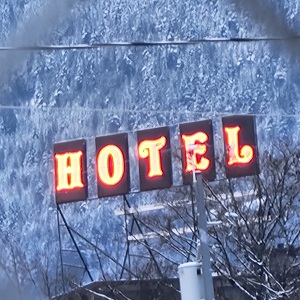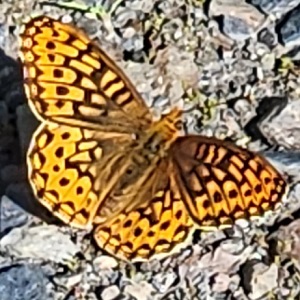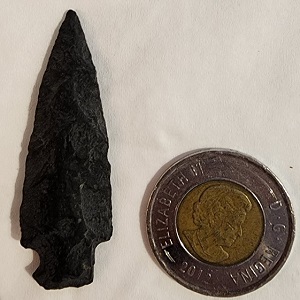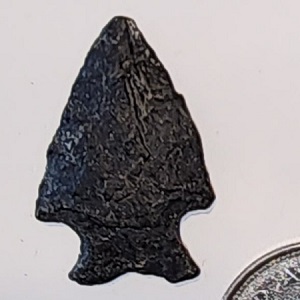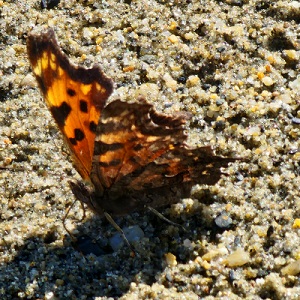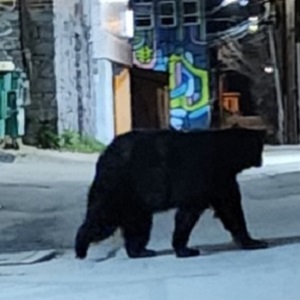Finally finished this, an easy 10 pages of notes which I'll condense here. First the criticisms:
- You don't need to read "The Recognition and Destruction of Real Vampires" by the same Author. It is, essentially, bits of this book reassembled in a shorter package for less literate audiences. This one has it all.
- This edition, it's terrible. Too wide, advertisements for fortune telling websites at the bottom of every chapter (an affront to every serious scholar in Vampirism, really, I bought the book, do I need to endure the ads?)
- Add to the terribleness of the edition, certain words in other languages end up with a default translation of "###", and you're like "WTF", because they didn't want to set type for symbols they didn't have. Bullshit.
So, a great book - Perfect Montague Summers, only spend the money and buy an older edition. Lesson learned from me.
Now - to the notes. Summers, he's a devotee of the subject, obsessed, as it were, and there's no one who's written on the subject that he hasn't read. So you get in this pocket biographies of every great life lived in the margins that ever was. He rescues countless authors from obscurity, his footnotes for every chapter run longer than most serious academic authors footnotes run at the end of entire books. He knows his subject.
He seldom - I notice - addresses his topic head on - it's circuitous, he starts the book with a chapter devoted to the salacious details of people who were buried alive, cataleptics that were buried prematurely, subsidized with dozens of anecdotes - and an example of his passion for this: "Dr. Franz Hartmann, in his great work 'Premature Burial'". You just have to laugh out loud, and there's dozens of similarly funny lines (unintentionally? I'm not sure I want to underestimate Summers) scattered throughout the book. Then there's Constance Whitney from Cripplegate, whom to quote a more reliable source than Summers:
A tall tale derived from a memorial in St Giles’ church to Constance Whitney (1611–28), said to feature a representation of a lady in a shroud rising from her coffin. This has been interpreted to refer to an unidentified young woman who was buried while in a trance and released from her entombment by an unscrupulous sexton who opened the coffin to steal a valuable ring from her finger. She rose up, the sexton fled in terror and she went on to live a long life and bear several children. The legend was further embellished to suggest that the woman in question was Constance herself. The story has gained new currency in modern times, having been repeated in several semi-scholarly works by ‘vampirologists’, including Bob Curran’s Encyclopedia of the Undead (2006).
And there are tales of Lovers reunited after one "dies" to escape an inconvenient marriage, parallels with other dreadful instances of popular theatre, books, etc. of the time, and all of them, Summers assures us, are true, or at least have some root in fact. This raises another point - while I'm not entirely sure that Summers is having us on, I'm not so sure having finished this that he isn't. Another line (linked so you can read the text): "In vain did her advocate plead", which gives a tone for the clearly absurd romance that Summers relates.
Following this a chapter filled with resurrections, talking bodies, the reanimation of corpses to fulfill some dark occult purpose, or unfinished business upon earth, then onto Cannibalism, Necrophilia, Necrophagia, Necrosadism, Serial Killers and Lunatics, all told with a great relish and gusto even, Summers loves his subject matter, and no tale is too dark for him to shed a little light on and perhaps embellish with a few added gruesome and lurid details of his own, all collected from a thousand volumes in a dozen languages, here assembled as evidence for your perusal. He frequently embellishes information, or 'corrects' what he considers "embellishments" to tales that are frequently so outlandish they demand no correction, merely a tossing into the trash or a reevaluation in the light of "fairy tale", "allegory" or "myth". Any stories concerning the Church, or with eyewitnesses connected to the church in any official manner whatsoever, are accepted outright as truth, hence the quote: "It is now necessary to inquire into certain extraordinary cases which are true beyond all manner of doubt of persons who died excommunicated and whose bodies were seen to rise from the tomb and leave the sacred precincts where they were buried." Now, if you think about it, this sentence is a masterpiece, it requires, demands so many ad-priori assumptions as to beggar belief and override conscious objection...
He continually preempts critical thinking, another:
"One notoriously rationalistic writer is "strongly inclined to believe that such alleged blood-relics always liquefied if they were exposed long enough to light and air," a suggestion which is demonstrably false. The same maggot-monger has audaciously ventured to declare: "If we could suppose some substance or mixture had been accidentally discovered which hardened when shut up in the dark, but melted more or less rapidly when exposed to the light of day in a warmer atmosphere, it would be easy to understand the multiplication of alleged relics of this character, which undoubtedly seems to have taken place in the latter part of the sixteenth century." It is instructive to remark what wild hypotheses men will build and what shifts men will seek who endeavour to escape from facts."
Which is harsh, but again, is it? Or is the tongue in the cheek a bit...
"These difficulties which Dom Calmet with little perception has raised can be very briefly answered, and they are not only superficial, but also smack of heterodoxy. In the first place, the story that he tells is far from satisfactory, and even if it were--what it may be--much exaggerated one can hardly brush aside the vast vampire tradition because one instance proves to be overdrawn. In any case the business of the watcher from the belfry and the demand that the Vampire should regain his shroud by climbing the stairs to the top of the tower do not bear the mark of truth, but what is certainly significant is that the Vampire was decapitated and that then the hauntings ceased. I conceive that the story of the cerements is mere elaboration, but that the grave of the Vampire was traced, opened, and that his head was severed from his body. This eliminates some highly charged details whilst it does not touch the facts of the case. So we see that the story when divested of these trappings offers nothing impossible, that is to say nothing extraordinary or unusual in such histories."
Bold lettering is mine own addition.
"In some traditions the Vampire is said to float into the house in the form of a mist, a belief which is found in countries so far separate as Hungary and China. In the latter empire wills-o'-the-wisp are thought to be an unmistakable sign of a place where much blood has been shed, such as an old battle field, and all mists and gaseous marsh-lights are connected with the belief in vampires and spectres which convey disease. Since the effluvia, the vapour and haze from a swamp or quaggy ground are notoriously unhealthy and malarial fevers result in delirium and anæmia it may be that in some legends the disease has been personified as a ghastly creature who rides on the infected air and sucks the life from his victims. But all this is mere fancy, and only deserves a passing mention as belonging to legend and story. Of the same nature is the notion that Vampires can command destructive animals and vermin such as flies, and, in the East the mosquito, whose bite may indeed convey some fever to the veins and whose long proboscis sucks the blood of animals and man. We may remember that at Accaron Beelzebub was the Lord of flies, and these insects were often regarded as having something of a diabolical nature."
He notes the parallels with lycanthropy - Do not eat sheep that have been killed by a werewolf, or wear their fleece, - this is rabies, clearly, and good common sense. But, of course, it isn't, and he dismisses rational explanation so out of hand that I have begun to imagine him in the same light as Aleister Crowley, a bit of provocateur within the Church, by taking their line so extremely he's undermining them...He even goes so far as to quote De Sade to support his arguments, which, when you think about it, well, Summers was a priest, think about it. "Whatcha reading Father Summers...?" ... "Oh, just a little book by the Marquis De Sade". Rumors of Summers dabbling in the Black Arts himself become a little more credible...
The final chapters are devoted to the summary of bad novels, stories and period plays about Vampires, the plays are summarized with their entire cast - who played who, reviews, etc, etc, etc, - almost like a cheap ploy to pad the book, and he recommends embarrassing melodramas (and you can tell, even reading the French quotes they provide, how awkward and ridiculous they are), plays he hasn't seen, based on the recommendations of others and the fact he wished he had been alive 50, 70, 100 years ago to see them. He is as fascinating a character as his subject.
Now, if you google some of the quotes above you can read him online, but be careful, you don't want an edited version. Stumble through the Latin, the French, there's no joy in an "edited" Version, the delight is in what most editors would throw aside, his attention to detail, cavalier disregard for common sense or fact, his own morbid enthusiasm of the topic and all its roots and branches, his frequently grim and unnecessarily detailed speculations as to the suffering of the victims of Vampirism or the dealing with the Vampire itself. And of course, this makes sense and he refers to it, "Psycho-sexual lust for blood", or some such, not realizing that he certainly shares it himself and his attention to trivial detail, almost to the point of titillation, reminds me that there is within the horror genre some sublimation of darker sex drives.
I mentioned in an earlier post I was searching for the deeper truth that lie behind the Vampire myths - I think I've figured them out. I'll begin with the physical:
- There are the warnings about place - Vampires frequently haunt Crossroads, Graveyards, Swamps and Latrines. OK. Highwaymen also haunt Crossroads; And Graveyards, Swamps and Latrines? Clear breeding grounds for Typhus, Malaria, Yellow Fever, Dengue Fever, West Nile, etc. So There's a clear physical reason to avoid these places. And note the symptoms of many of these diseases resemble the symptoms of having been bit by a vampire - "sleeping sickness", lassitude, and - of course - the Mosquito sucks blood. So - ??? Do I need to go further? Probably not.
- That Vampires can't cross running water, or a tide at ebb or flow. They can, however, cross a standing tide or body of water.. Where do mosquitoes breed? Standing water.
- Garlic - a universal talisman or charm against vampires, curiously also seems to have the effect of repelling mosquitoes.
- And the dusk-to-dawn nature of most Vampires, especially in the temperate Slavic countries, parallels the time when mosquitoes are most active.
So the physical root or manifestation of the Vampire is easily explained by the many congruities listed above. Now to the more psychological manifestations. Here I should clarify - I've come increasingly to the view that ALL MYTHS ARE PERSONAL, meaning that they describe events not across nations or history, but events in a PERSONS life. Histories are not Myths. So - the purpose of Myth is to warn one, or provide a guide for navigating or surviving a certain set of life events.
- Their Incorruptible Nature - that they are found in the grave much as they were in life, having feasted on the living. This is Memory. We remember people as they were alive, so when we "exhume the Vampire" - or "remember the person" - we are remembering the person - the Vampire - as they were in life.
- That, like witches, they have an OCD nature that can be thwarted or diverted by throwing down things like a handful of millet seeds or sand, and they will be compelled to stop and count each one. Still puzzling about this.
- Glamour - The ability to look unlike what they are, to look - alive, young, beautiful, to conceal their appearance through magick or other dark arts. This is again clearly memory - often we remember about people or relationships what we want to remember, certainly not as they are now or even were in life.
- Excommunication Creates Vampires - This is a warning for people to stay within the bounds of the church and society. Bear in mind that it's the worry or concern for the deceased's soul that raises the Vampire and prompts them to seek the aid of the Church in laying it to rest. Also it suggests the lack of completion we can feel in our relations with the dead when we're not granted ritual or ceremony to lay them to rest.
- Suicides, those that lieth in a ditch uncovered, that die of hunger in prison, People in life who have been distinguished by violence, and as we proceed down the list we can count virtually anyone and everyone as a potential Vampire. The summary of this is that it embodies unfinished business with the deceased, that again WE are raising the Vampires in Memory - People with missing children or loved ones can easily attest as to the lifelong haunting that ensues.
- Should be transfixed with a SINGLE BLOW - to do more might inadvertently restore it to life. This is to say that we don't want to over-dwell or "over-kill" the memory - by reliving events we are granting them life and power over us, put it to rest in a single blow.
- Dusk 'til Dawn nature of most Vampires, again, suggests dreams and the unconscious, in those hours of solitude away from work we may find our thoughts wander or fall prey to memory, we may dream of those deceased, and this is the warning that these are the times they are most active.
So, here we have it, a myth that combines a real world warning against typhus, mosquitoes, highwaymen, against the reviving of the dead in memory, throw in frequent real world accounts of people leaving their premature burials, victims of rabies acting like lunatics, bona-fide lunatics in the form of serial killers, shake them all together and you have THE VAMPIRE. Sorry Montague, but I have a sneaking suspicion you knew all along...

